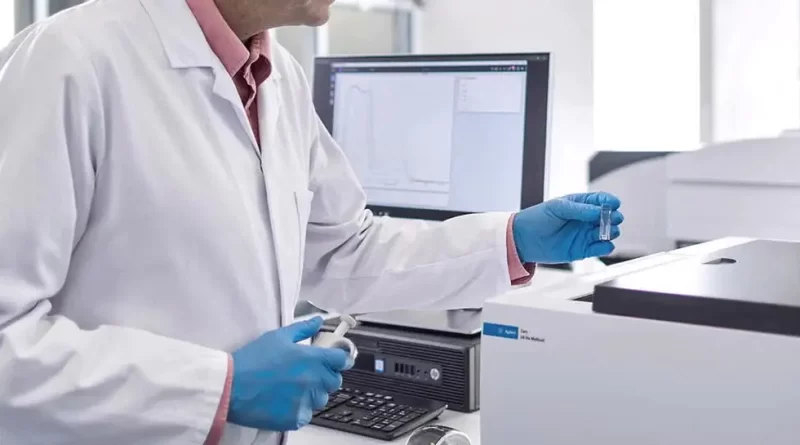What are the Advantages of Agilent Molecular Spectroscopy?
For different industries such as pharmaceuticals, energy, chemical, and life science research, time is very valuable, and efficiency is essential. These industries would need accurate equipment for diagnosis, testing, and analysis.
Agilent molecular spectroscopy has developed several technologies widely used to detect or measure the component of items or materials on a molecular level for data analysis and collection. These devices are flexible and accurate in their portfolio, making them valuable tools for projects and research.
Before considering what Agilent Molecular Spectroscopy can offer, let’s look at some of their molecular spectroscopy instruments and their different functions.
UV-Vis Spectroscopy
UV-Vis is ultraviolet radiation and visible light that exist together with the other forms of radiation such as radio, infrared (IR), cosmic, and x-rays, which are all within the electromagnetic spectrum. Ultraviolet radiation and visible light fall within the spectrum’s following wavelengths.
- Ultraviolet: 190 to 400 nm
- Visible: 400 to 800 nm
UV-Vis spectroscopy uses ultraviolet and visible light to detect and measure samples through light radiation that is absorbed, reflected, or transmitted. The sample is measured through its interaction or emission of electromagnetic radiation.
Three different light sources have been used in UV-Vis spectrophotometers to emit light to be absorbed and transmitted for measurement or detection.
- Deuterium (D2) arc lamp
- Tungsten-halogen lamp
- Xenon flash lamp
FTIR Spectroscopy
Fourier transform infrared spectroscopy (FTIR) uses infrared (IR) to measure the light energy through its molecular vibrations in a sample. Each functional group has its unique vibrations, which is why it’s also called the fingerprint region, as it can be determined by the pattern of vibrations it reflects.
On FTIR, the light frequencies are measured simultaneously, which is faster in obtaining measurements than individually, as seen on a dispersive IR spectrometer. The FTIR uses a mathematical conversion called Fourier transformation to get the IR spectrum.
Fluorescence Spectroscopy
A sample or an object is excited if it creates a state of higher energy, as it goes from a state of a higher energy into a state of lower energy. With luminescence, this phenomenon can be observed through its emission of light.
Illumination or light energy emission may be due to the following:
- radioactive bombardment (radioluminescence)
- light source (photoluminescence)
- chemical reaction (chemiluminescence)
- biochemical reaction (bioluminescence).
In the case of fluorescence, it’s in its luminescence state if it goes from a higher energy state into the lower energy state, in which the energy comes from the emitted light. Such reactions through this phenomenon can provide information regarding the energy or polarity of a molecule or can also be used in analysis to determine the quality of LEDs or solar cells.
Raman Spectroscopy
Raman spectroscopy uses a technique that it detects based on the Raman effect or Raman scattering, where small amounts of photons are scattered due to the loss or gain of energy to molecular vibrations. The energy from molecular vibrations also has specific features that are unique to the composition and structure of the molecules.
The Raman effect can be observed in such patterns from molecular bond vibrations and peak intensity. Within the Raman spectrum, the fingerprint region between 400 and 1,500 cm-1 detects the substance’s chemical structures.
1. Sampling Flexibility
Agilent’s FTIR spectroscopy has a wide range of use in terms of its sampling flexibility. Its technique can be applied to samples such as liquids, solids, powders, semisolids, gasses, and pastes.
2. For Efficient Identification of Raw Materials
Using Raman spectroscopy incorporated on their handheld devices, it can identify raw materials in a transparent or non-transparent container. This can save time and effort in opening and inspecting each container, especially if there are thousands of items or containers to inspect and identify.
3. Offers Safe Identification of Hazardous Materials
Work safety should be part of the top priority of such industries with working conditions exposed to chemical and other physical hazards. The spatially offset Raman spectroscopy (SORS) technology is incorporated in the device used in their Agilent Resolve system. It’s not just used in lab settings conducting harmful substances in their research or experiments.
Their devices can also be used to inspect airports for explosives, narcotics, and other hazardous materials.
4. Faster Conduction of Research Experiments
In conducting research for manufacturing or academic purposes, several experiments or testing can now be conducted simultaneously using UV-Vis spectroscopy incorporated in their Cary 3500 Multizone UV-Vis.
The device can be used in samples that must be tested at 4 different temperatures simultaneously. This also saves time compared to conducting such experiments individually and getting the results in less than a second.
Conclusion
The Agilent Molecular Spectroscopy offers an extensive range of techniques within its instruments to analyze samples and experiments efficiently.
It has developed research tools that contribute significantly toward designated projects within manufacturing, quality control, laboratories, protection and emergency services, and law enforcement agencies that need accurate information during security inspections and criminal investigations.
References:
https://www.agilent.com/en/product/molecular-spectroscopy
https://explore.agilent.com/basics-of-uv-vis/
https://www.agilent.com/en/product/molecular-spectroscopy/uv-vis-uv-vis-nir-spectroscopy
https://explore.agilent.com/vaya

